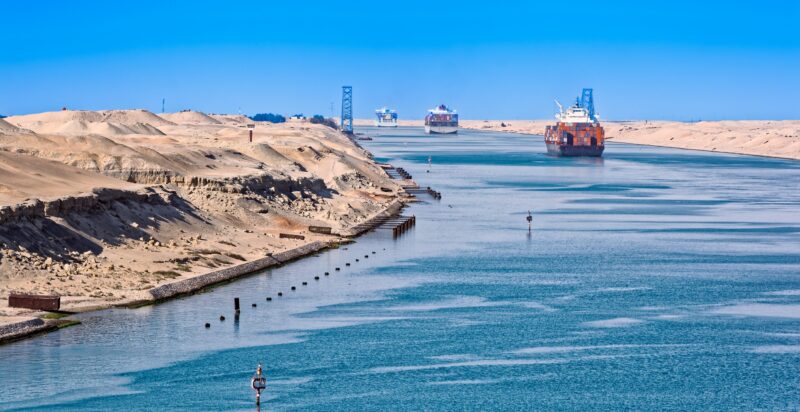Egypt’s earnings from the Suez Canal saw a steep decline in 2024, dropping by nearly two-thirds compared to the previous year.
Officials attributed the downturn to rising instability and ongoing conflicts in the Middle East, which have severely affected the flow of maritime traffic through the strategic waterway.
The canal, responsible for handling around 10% of global trade in recent years, remains one of Egypt’s most critical sources of foreign currency.
According to a statement published on Facebook by the Suez Canal Authority, the canal brought in $3.991 billion in 2024, a sharp fall from the record-setting $10.25 billion generated in 2023.
Operations along the route have faced severe disruption since Yemen’s Houthi rebels — backed by Iran — began launching attacks on vessels en route to Israel. These assaults are part of the group’s effort to pressure Israel into halting its military campaign in Gaza, which began on October 7, 2023. Between November 2023 and January 2024, the Houthis struck over 100 merchant ships using missiles and drones, sinking two vessels and causing the deaths of four sailors. The group has vowed to continue the attacks as long as the conflicts persist, causing substantial damage to shipping activity in the region.
As a result, only 13,213 ships transited the canal in 2024 — a 50% drop from more than 26,000 vessels recorded the year prior.
Still, canal authority chief Osama Rabie said that the attacks challenge the region but have not prevented Egypt from continuing to provide its navigational and maritime services in the Suez.
In March 2024, the International Monetary Fund reported that trade via the canal had halved in the first two months of the year, primarily due to increased risks in the Red Sea region.
In 2015, Egyptian President Abdel Fattah el-Sissi’s administration completed a major expansion of the canal, adding a second lane to accommodate some of the world’s largest ships.
Linking the Mediterranean and Red seas, the canal has served global trade since 1869 and is a vital corridor for transporting oil, natural gas, and goods. It continues to operate daily convoys, with one traveling north and another heading south.




